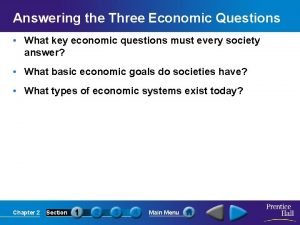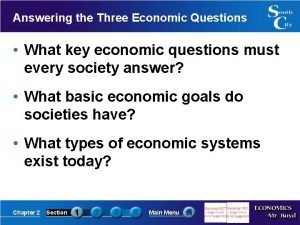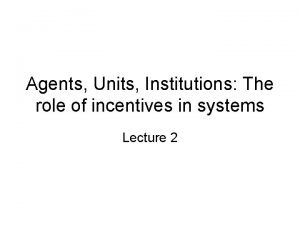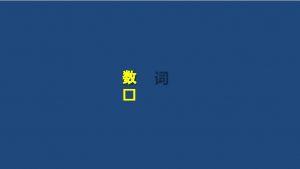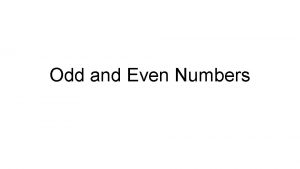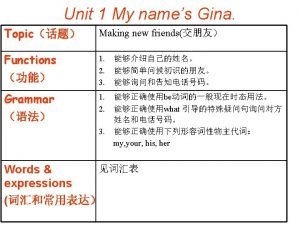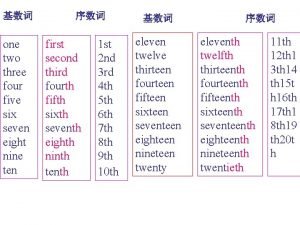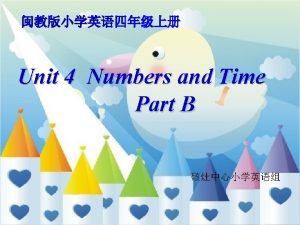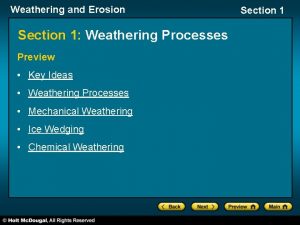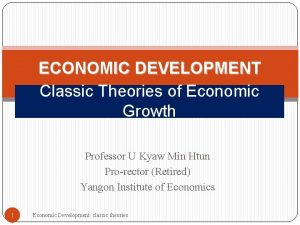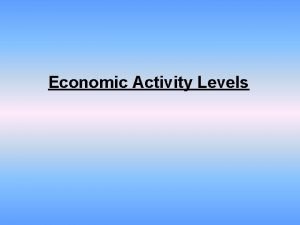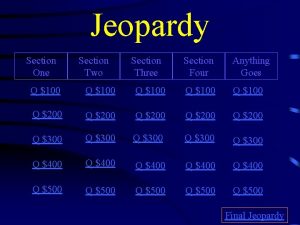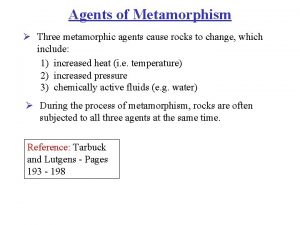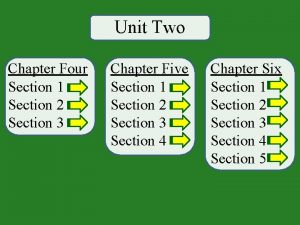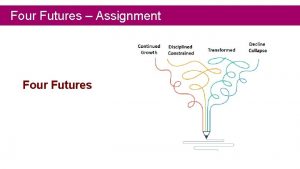Section Two Economic Agents Chapters Three Four Chapter



























- Slides: 27

Section Two: Economic Agents Chapters Three & Four

Chapter Three Households

1. Introduction • In a market economy there are three important kinds of decision makers: – Households – Firms – Government • This chapter will focus on what households do to live on a day to day basis known as (Consumption) • Household Consumption refers to how much consumers are willing to spend when buying their products.

2. Circular Flow of Income Diagram

3. Household Behaviour • Households have different economic characteristics: Some of them are poor, rich, work, retired. • Households have different structures: single, family (two or more), friends or roommates. • Households have different social characteristics: class, race, gender or generation • Households have different consumption patterns as well purchasing power of people; This mainly depends on the level of income.

4. The Personal Sector: Income and Savings • The main goal of firms and organizations is to make profit. • Families and Household Incomes include: – Wages & Salaries (selling Labour Force) – Selling factors of production like rent • The Three Ways of Income Use by Households: (1) Consumer Expenditure (day to day activities) - food, drinks, tobacco, and housing make the larges part of consumption. (2) Saving in order to provide security for the family in the future and to provide shelter (house) (3) Paying taxes (taxes used by the governments to pay social consumption such as education, , roads, etc and to re distribute purchasing power between household.

5. The Demand Curve • In economics, the demand curve is the graph showing the relationship between the price of a certain commodity/good and the quantity that consumers are willing and are able to purchase at that given price. • The Law of Demand – The quantity demanded is inversely related to the price other things constant. – This relation could be represented by the demand curve (downward slop).

5. The Demand Curve

6. Quantity Demanded and a Movement Along the Curve • A movement along a demand curve due to a change in price is known as a change in quantity demanded. • Note that the curve itself did not move…it was only a movement along the curve.

7. Changes in the Demand Curve itself • A change in the demand curve itself is known as a shift in the demand curve. This is when the whole curve shifts. • A rightward shift means that the demand has increased. • A leftward shift means that the demand has decreased.

8. Factors that Shift the Demand Curve 8. 1 Changes in Income 8. 2 Availability of Substitutes 8. 3 Availability of Complementary Goods 8. 4 Changes in Demand due to Changes in Tastes

8. 1 Changes in Income Normal Goods Inferior Goods when income increases, more when income goes up, less commodities of this type will commodities will be be purchased. In other purchased (black and white words, demand will increase T. V. ) and shift to the right. Demand will decrease and shift to the left

8. 2 Availability of Substitutes • Substitute goods are goods which can be replaced by each other in the mind of the consumer. • Butter and margarine, tea and coffee, taxi and bus, pen and pencil, hotel and motel, radio and record player, are all items which, for most people, can be replaced by each other. They are substitute goods. • For instance, tea and coffee are for many (but not all) consumers are substitute goods. • If the price of tea goes up, the purchases of tea will decrease and the purchases of coffee will increase. • For Demand Curve for Tea: there will be a movement along the curve. As price of tea increases, quantity demanded will decrease. • Demand Curve for Coffee: Demand itself will increase and shift rightwards.

8. 3 Availability of Complementary Goods • Goods are complementary when their consumption is tied to each other. • Tires and cars, bullets and guns, lamps and lamp shades, cream and coffee, nails and hammer, nuts and bolts, are all items that go together. They are complementary goods. • For example, suppose we have tea and sugar. If the price of sugar increases, the demand for tea will decrease and shift to the left. • Demand for Sugar There will be a movement along the curve. As price of sugar increases, quantity demanded will decrease. • Demand for Tea There will be a shift to the leftward of the demand curve.

8. 4 Changes in Tastes • These are changes in fashion, weather, in trends that affect the change in demand curves. • For example, what happens to the demand for hot chocolate in the summer? Okay, in the winter? • What happens to the demand for swimming suits in the winter?

Chapter Four: More on Consumer Demand

1. The Concept of Elasticity • Elasticity of Demand: – It measures the extent to which a change in certain factors influences the level of demand. • Main Measures that we look at are – Price Elasticity of demand – Income Elasticity of Demand – Cross-Elasticity of Demand

2. Price Elasticity of Demand (Ped) Price Elasticity Of Demand: Firms need to know to what extent will demand change when we change price. Price elasticity of demand (ED) = % change in QD / % change in P D More precisely, it gives the percentage change in quantity demanded in response to a one percent change in price.

3. The Concept of Elasticity: – If Elasticity = 1, demand is unit elastic – If Elasticity is > 1 , The demand is price elastic – If Elasticity is < 1 , The demand is price Inelastic

4. Elasticity Graphs ED<1 ED >1 P P P 1 D P 2 D Q 0 Q 1 Elastic Demand Q 2 0 Q 1 Inelastic Demand Q 2 Q

4. Elasticity Graphs Ctd… P D P ED=0 D Q 0 Zero Elasticity Perfectly Inelastic Infinite Elasticity Perfectly Elastic

• Necessity: the more necessary a good is, the lower the elasticity, as people will attempt to buy it no matter the price, such as the case of insulin for those that need it. [10][26] • Duration: ] This does not hold for consumer durables such as the cars themselves, however; eventually, it may become necessary for consumers to replace their present cars, so one would expect demand to be less elastic. [26]

5. Factors Influencing Price Elasticity 5. 1 Availability of Substitutes (more elastic). The more and closer the substitutes available, the higher the elasticity is likely to be, as people can easily switch from one good to another if an even minor price change is made. 5. 2 The longer the time, the more elastic a product becomes. For most goods, the longer a price change holds, the higher the elasticity is likely to be, as more and more consumers find they have the time to search for substitutes. For example, when fuel prices increase suddenly, for instance, consumers may still fill up their empty tanks in the short run, but when prices remain high over several years, more consumers will reduce their demand for fuel by switching to carpooling or public transportation.

5. Factors Influencing Price Elasticity 5. 3 Addictive Nature of Products (drugs, cigarettes – inelastic) - The more addictive a product is, the more inelastic it becomes. - For example, if a person is addicted to drugs, no matter how high the prices will be, his/her demand for the product will respond very slowly to changes in prices. 5. 4 Necessity versus Luxury - If product is a necessity, needed for living, then its demand becomes inelastic such as water. - If product is a luxury, demand for that product is elastic.

6. Relationship between Price Elasticity and Revenue • Revenue: – Revenue (R) = Quantity (Q) * Price (P) – It determines the returns is money terms due to the amount of quantity of products sold. • Price Elasticity of Demand Revenue --When the price elasticity of demand for a good is inelastic (|Ed| < 1), the percentage change in quantity is smaller than that in price. Hence, when the price is raised, the total revenue of producers rises, and vice versa. -When the price elasticity of demand for a good is elastic (|Ed| > 1), the percentage change in quantity is greater than that in price. Hence, when the price is raised, the total revenue of producers falls, and vice versa

7. Income Elasticity of Demand: • Measures the sensitivity of demand to changes in income. • Income elasticity of demand: (EI) = %change in QD / % change in I • A negative income elasticity of demand is associated with inferior goods; an increase in income will lead to a fall in the demand. • A positive income elasticity of demand is associated with normal goods; an increase in income will lead to a rise in demand.

8. Cross Price Elasticity of Demand • The cross-price elasticity of demand examines the nature and the extent of relationship between two products. • It measures the rate of responsiveness of quantity demanded of one good, due to a price change of another good. • Cross Price Elasticity of demand = %change in Dx / % change in Py. • If two goods are substitutes, we should expect to see consumers purchase more of one good when the price of its substitute increases. Cross Price Elasticity will be positive. • Similarly if the two goods are complements, we should see a price rise in one good causes the demand for both goods to fall. Cross Price Elasticity will be negative.
 Chapter 2 section 1 answering the three economic questions
Chapter 2 section 1 answering the three economic questions Chapter 2 section 1 answering the three economic questions
Chapter 2 section 1 answering the three economic questions Role of economic agents
Role of economic agents Role of economic agents
Role of economic agents Economic agents
Economic agents Answering the three economic questions
Answering the three economic questions Four cleaning agents
Four cleaning agents Two three four five six seven
Two three four five six seven One two three four five
One two three four five One two three bleem four
One two three bleem four Zero one two three four five mistake
Zero one two three four five mistake Testing one two three four
Testing one two three four Five six seven eight
Five six seven eight Five seven nine
Five seven nine One two three four five six to hundred
One two three four five six to hundred One two three four seasons
One two three four seasons One two three four time to go to school once more
One two three four time to go to school once more Identify three agents of mechanical weathering
Identify three agents of mechanical weathering Two + two = four cryptarithmetic solution
Two + two = four cryptarithmetic solution Protective agent definition
Protective agent definition Chapter 1 section 3 economic choices and decision making
Chapter 1 section 3 economic choices and decision making Economic growth vs economic development
Economic growth vs economic development Difference between economic growth and economic development
Difference between economic growth and economic development Economics unit 1 lesson 2 difficult choices
Economics unit 1 lesson 2 difficult choices Chapter 5 principles of engine operation
Chapter 5 principles of engine operation Dualistic development thesis
Dualistic development thesis Modern filipino entrepreneurs
Modern filipino entrepreneurs Levels of economic activity definition
Levels of economic activity definition
